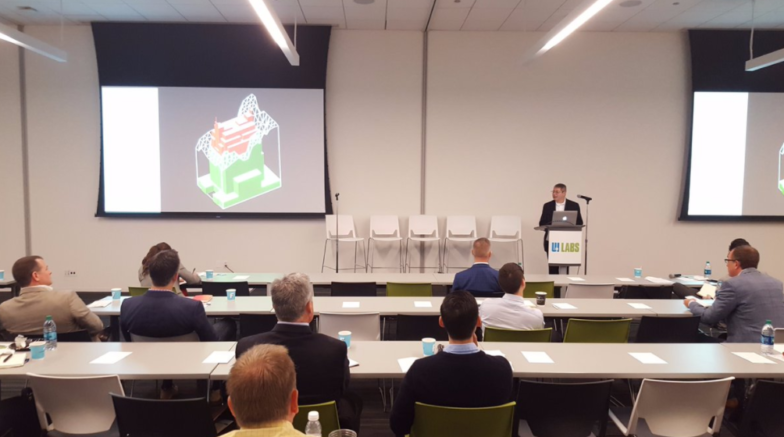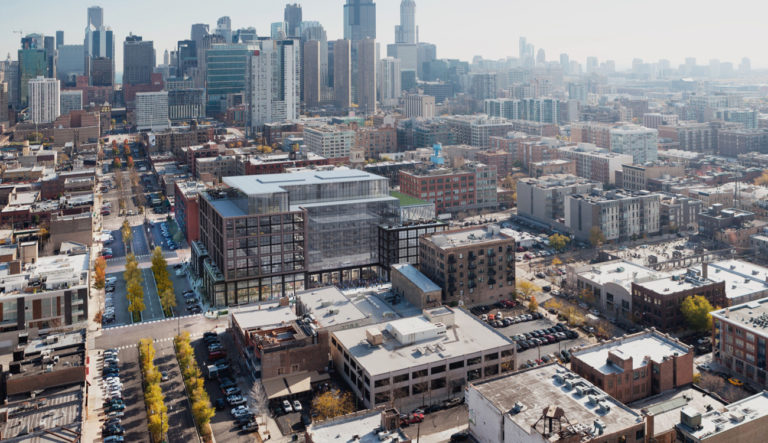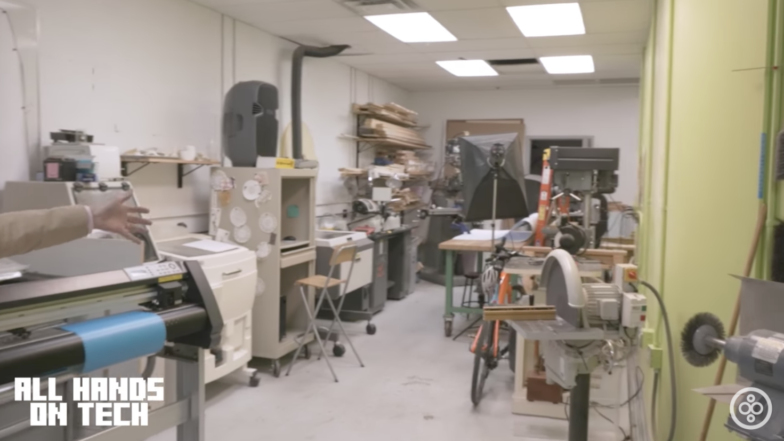The Chicago Architecture Biennial, billed as the largest architecture and design exhibition in North America, is now under way (our Buildings 2.0 conference was one of the official partner events!), and local civic leaders are paying close attention. Beyond nostalgia for Chicago’s impressive architectural legacy, some see this big event as a key symbol of that continuing leadership in the global buildings business.

Although Chicago is widely lauded for its architecture, the global significance of the city’s place in commercial buildings still lacks recognition. Why? The industry itself is fractious and fragmented, and doesn’t even think of itself as one buildings industry. And with hundreds of thousands of mid-sized players scattered across the globe, it’s also difficult to define clear centers.
But the city is home to many industry companies — from giants to startups. Here’s what we’ve drummed up.
Global export: Building design and technology

Through the the late twentieth century, led by the firm of Skidmore, Owings & Merrill (SOM), Chicago pioneered advances that made possible the city’s tall buildings, including the Sears Tower (now Willis Tower) and the John Hancock. That glass and steel super tower came to be a symbol of economic prowess around the world, and many of Chicago’s architects, engineers, contractors, and real estate developers went on to find opportunities to work on mega-building projects, from the Petronas Towers in Kuala Lumpur to the Burj Khalifa in Dubai to Jin Mao Tower in Shanghai.
Today, Chicago architect Perkins & Will, one of America’s largest architecture firms, boasts projects such as Kenya Woman and Children’s Wellness Centre and the Center for Research Excellence and Technological Enterprise in Shanghai. Chicago-based ESD Global, a leader in the field of engineering, counts the Federation of Korean Industries Headquarters in Seoul, the Astana Expo City in Kazakhstan and Chengdu Dongcun Greenland Tower among its work.
Beyond architecture and engineering firms, real estate developers like the John Buck Company also have found their way to international work on projects such as the Al Maryah Island development. Beyond these examples, Studio Gang, JAHN, Adrian Smith + Gordon Gill, Goettsch, Great Lakes Dredge & Dock, Walsh, and other Chicago based firms are also international exporters of building know how.
The city is home to two real estate giants…

With the merger of Cushman & Wakefield and DTZ, Chicago is now home to two of the world’s three leading real estate services firms. At the time of its merger, Cushman & Wakefield boasted revenues of $5.5 billion, more than 43,000 employees, and management of more than 4 billion square feet of real estate. The nation’s second largest real estate services company, JLL, lists 70,000+ employees in 80 countries. Chicago’s businesses don’t just develop, design, and build the world’s buildings, they lease, manage, and invest in them, too.
..and a vast network of research groups
From USG, the nation’s largest drywall manufacturer, to Arcelor Mittal, one of the world’s largest steel companies, to KONE elevators and escalators, a host of major building products companies have located their technical centers in the region surrounding Chicago.
Underwriters Labs, also maintains a significant building research facility in the region, and companies such as Sloan Valve, Kohler, Ozinga, and Steelcase also support research in the region. Add to these corporations, the headquarters of major industry groups such as the Portland Cement Association, the Association of Iron and Steel Construction, the Mason Contractors Association of America, the National Roofing Contractors Association, as well as national labs such as Argonne, Fermi Labs, and City Digital at UI LABS, the region’s infrastructure for building technology is unsurpassed.
AEC programs at area colleges and universities
Chicago schools may not garner the prestige of others on the coasts, but a circle of roughly 150 mile radius around Chicago would include dozens of colleges and universities including the University of Wisconsin, Marquette, Northwestern, DePaul, Roosevelt, Illinois Tech, Purdue, Valparaiso, University of Illinois at Champaign Urbana, Bradley, and University of Illinois at Chicago with respected programs in real estate, architecture, civil and mechanical engineering, construction, and project management.
Caterpillar, an industry juggernaut

Construction companies have a reputation for spending little on research. However, Caterpillar, with a reported $2 billion annual budget for research and development, seemingly extends its reach into all aspects of construction technology. Their recent activity includes everything from telematics to autonomous and remotely operated vehicles, augmented and virtual reality to drones, robotics, and artificial intelligence. Their impact on the built tech community is hard to overstate, and with a move from central Illinois to the Chicago area, that imprint on the region seems sure to grow.
A significant and strengthening built tech community
One of three biggest built tech exits in recent years, Textura, which was acquired by Oracle, was Chicago-based. IoT analytics firm, Uptake recently scored a $90 million Series C investment from Revolution Ventures, and in 2016, facilities maintenance firm SMS Assist pulled in $150 million in a round led by Goldman Sachs. Many smaller companies, including Ingenious Construction, Capital Construction Solutions, Truss, and SpotHero now call Chicago home, and more are on the way.













Discussion
Be the first to leave a comment.
You must be a member of the BuiltWorlds community to join the discussion.